Find Help
More Items From Ergsy search
-

Shoulder Exercises 1
Relevance: 100%
-
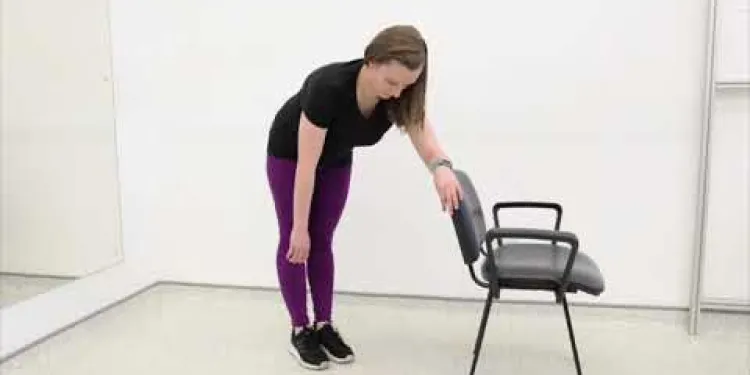
Frozen shoulder Pendular Exercises
Relevance: 90%
-

Frozen Shoulder Anterior Shoulder Stretch
Relevance: 74%
-

Shoulder subacromial shoulder pain
Relevance: 72%
-

Frozen Shoulder Scapular Setting
Relevance: 69%
-

Frozen Shoulder Assisted Abduction
Relevance: 69%
-

Shoulder pain | NHS
Relevance: 69%
-
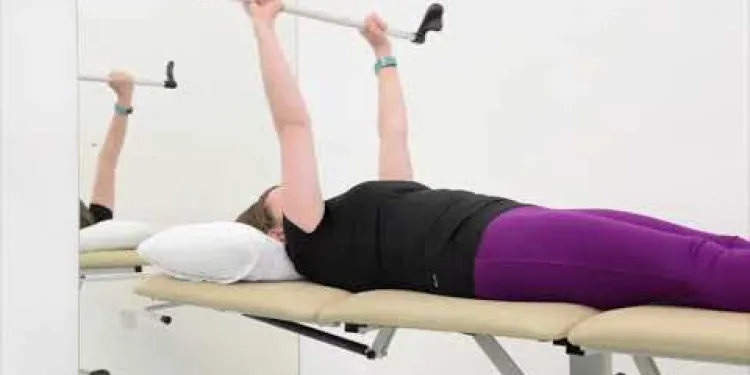
Frozen Shoulder Assisted Flexion
Relevance: 69%
-

Frozen Shoulder Lateral Rotation
Relevance: 69%
-

Shoulder pain | NHS
Relevance: 68%
-
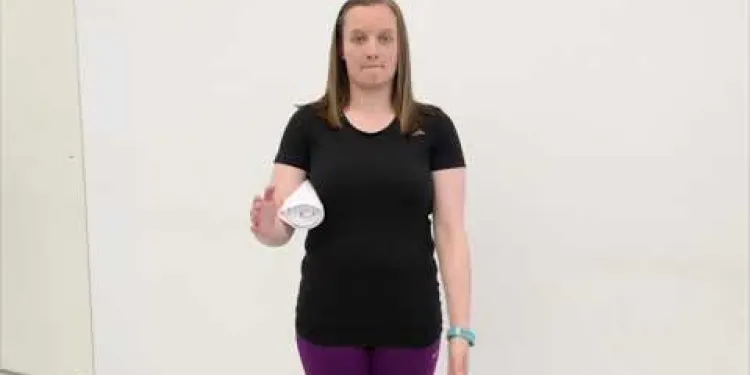
Frozen Shoulder Isometric External Rotation
Relevance: 66%
-
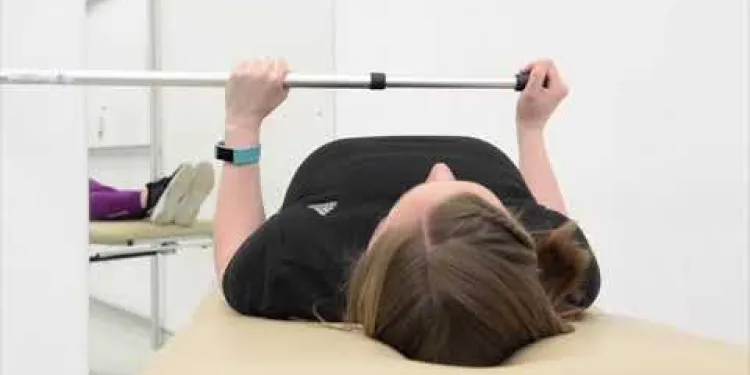
Frozen Shoulder Assisted Lateral Rotation
Relevance: 66%
-
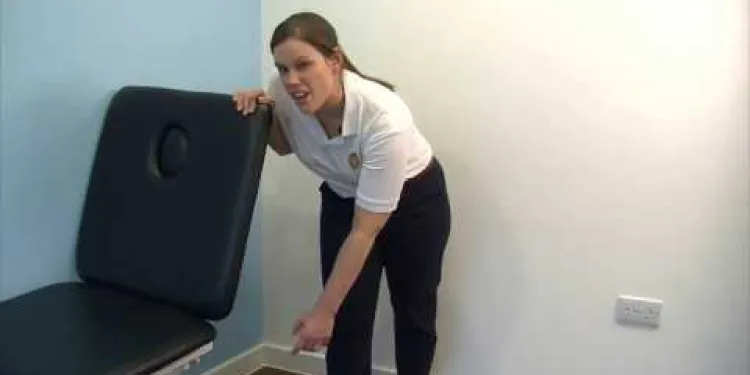
DBTH VFC DISLOCATED SHOULDER
Relevance: 61%
-

Shoulder pain | NHS
Relevance: 58%
-

Neck Exercises
Relevance: 54%
-

Neck Care Exercises
Relevance: 52%
-

Neck Exercises
Relevance: 50%
-
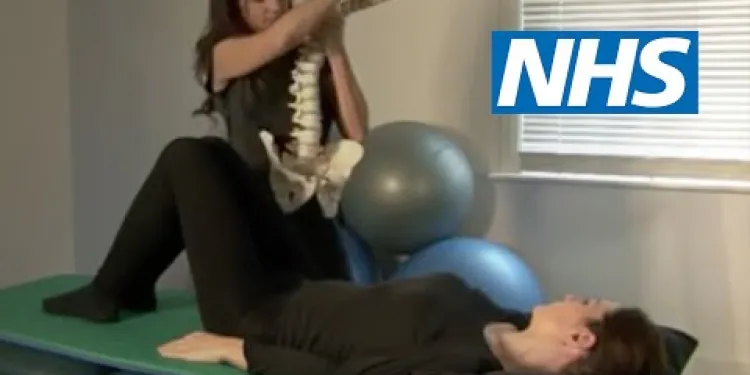
Exercises for sciatica: herniated or slipped disc | NHS
Relevance: 40%
-
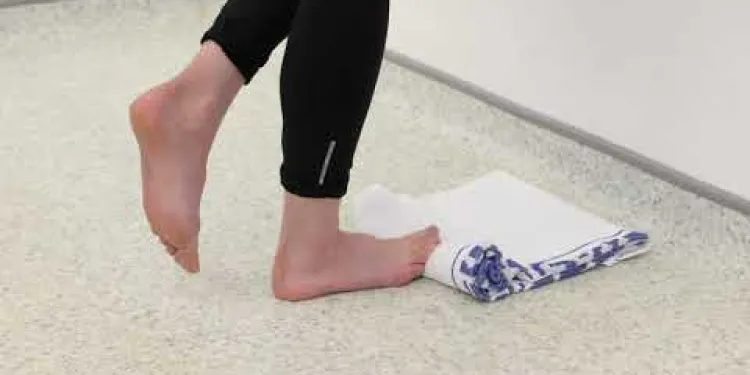
Plantar Fascia Loading Exercise (High Load Exercise)
Relevance: 36%
-

Facial exercise programme
Relevance: 35%
-
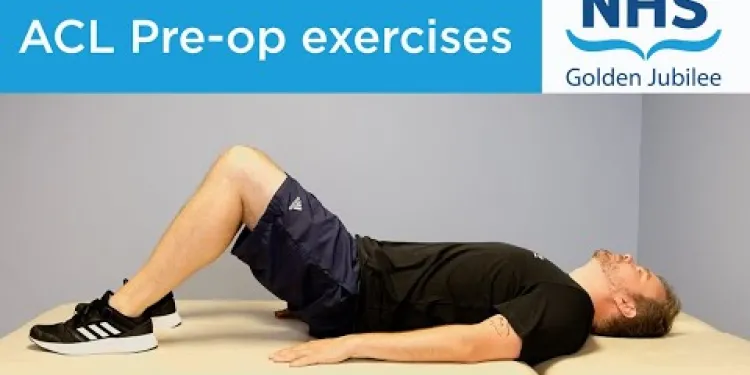
ACL pre-operation exercises
Relevance: 35%
-
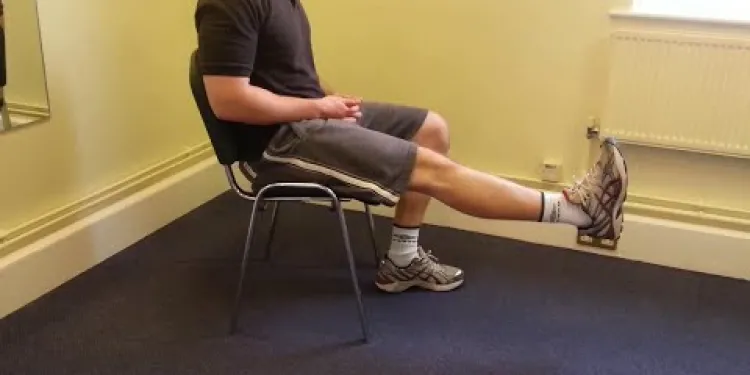
Knee Care Exercises
Relevance: 35%
-

Exercise in patients with a neuropathy
Relevance: 35%
-

Is it safe to exercise with a cold?
Relevance: 35%
-

ACL exercises post-operation
Relevance: 35%
-
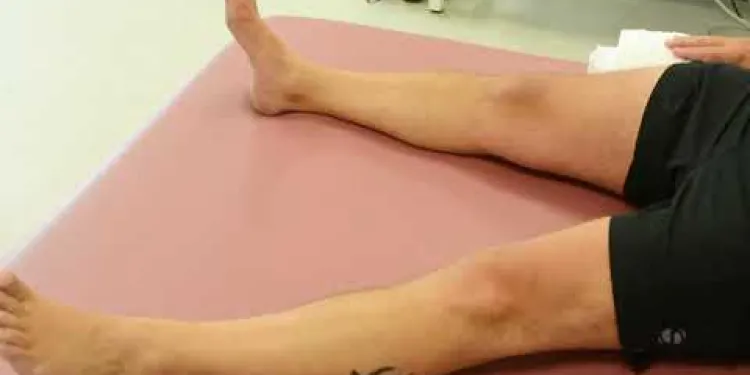
Joint School - Hip Exercises
Relevance: 33%
-

Joint School - Knee Exercises
Relevance: 33%
-

Will I be able to engage in physical exercise?
Relevance: 33%
-
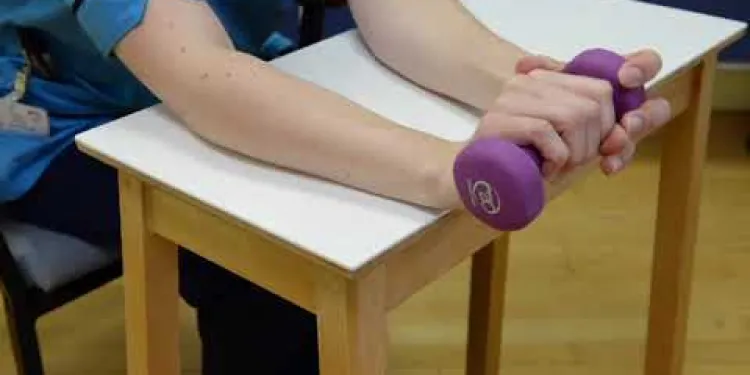
Elbow Eccentric Strengthening Exercise
Relevance: 33%
-

Exercise Routines for Busy Parents
Relevance: 33%
-

Can exercises help with labor preparation?
Relevance: 32%
-

Are there any exercises involved in air physiotherapy?
Relevance: 32%
-

How does exercise benefit pregnancy?
Relevance: 32%
-

Falls Prevention - strength and balance exercises
Relevance: 32%
-

Can exercise worsen whiplash symptoms?
Relevance: 32%
-

Can exercise influence cortisol levels?
Relevance: 32%
-

Can I do high-impact exercises while pregnant?
Relevance: 32%
-

Can I do abdominal exercises during pregnancy?
Relevance: 32%
-
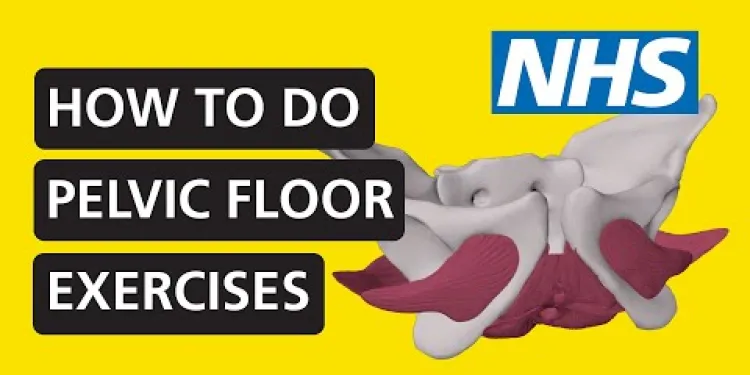
How to do pelvic floor exercises | NHS
Relevance: 32%
-

Is it safe to exercise outside during a heatwave?
Relevance: 31%
Effective Shoulder Exercises for Strength and Mobility
Introduction
Shoulder exercises are essential for maintaining strength, mobility, and overall joint health. For residents of the United Kingdom, incorporating shoulder exercises into your fitness regime can help prevent injuries, enhance athletic performance, and improve daily functionality. Here, we present some highly recommended exercises to keep your shoulders robust and flexible.
1. Overhead Press
The overhead press is a fundamental exercise that targets the deltoid muscles and helps in building shoulder strength. To perform this exercise:
- Stand with your feet shoulder-width apart.
- Hold a barbell or dumbbells at shoulder height with your palms facing forward.
- Press the weights upward until your arms are fully extended.
- Lower the weights back to the starting position and repeat.
This exercise can be performed with a barbell, dumbbells, or even resistance bands.
2. Lateral Raises
Lateral raises specifically target the side deltoids, which are crucial for shoulder width and aesthetics. Here's how to do it:
- Stand with your feet shoulder-width apart, holding a pair of dumbbells at your sides.
- Slowly lift the dumbbells out to the sides until they reach shoulder height.
- Hold the position briefly and then lower the weights back down.
Ensure to keep a slight bend in your elbows and avoid swinging the weights.
3. Front Raises
Front raises focus on the anterior (front) part of the deltoid muscles. To perform front raises:
- Stand with a straight posture, holding a pair of dumbbells in front of your thighs, palms facing your body.
- Raise one or both dumbbells in front of you until your arms are parallel to the ground.
- Lower the weights back to the starting position and repeat.
This exercise can be done one arm at a time or with both arms simultaneously.
4. Bent-Over Reverse Fly
The bent-over reverse fly works the posterior (rear) deltoids and is important for shoulder balance. Here’s how to perform the exercise:
- Bend at the hips with your back straight and knees slightly bent, holding dumbbells in front of you with palms facing each other.
- Raise the dumbbells out to the sides until your arms are parallel to the ground.
- Slowly lower the weights back and repeat.
Maintain a tight core to avoid straining your lower back.
Conclusion
Incorporating these shoulder exercises into your workout routine can significantly improve shoulder strength, stability, and flexibility. Residents of the UK can perform these exercises at home or the gym with minimal equipment. Always ensure to warm up before starting and use proper form to avoid injuries. Consistency and gradual progression are key to reaping the benefits of these exercises.
Effective Shoulder Exercises for Strength and Mobility
Introduction
Shoulder exercises help keep your shoulders strong and moving well. They are important for your health. People in the UK can add these exercises to their workouts to stop getting hurt and do better in sports. They also help with everyday activities. Let's look at some good exercises for strong and flexible shoulders.
1. Overhead Press
The overhead press is a basic exercise. It makes your shoulder muscles stronger. Here's how to do it:
- Stand with your feet as wide as your shoulders.
- Hold a bar or weights at shoulder height. Your palms should face forward.
- Push the weights up until your arms are straight.
- Bring the weights back down and do it again.
You can use a bar, dumbbells, or resistance bands for this exercise.
2. Lateral Raises
Lateral raises help make your shoulders wider. Here's how you do them:
- Stand with your feet shoulder-width apart, holding weights at your sides.
- Slowly lift the weights out to the sides until they are at shoulder height.
- Hold for a moment, then lower them back down.
Keep your elbows slightly bent and don't swing the weights.
3. Front Raises
Front raises work on the front part of your shoulder muscles. To do front raises:
- Stand up straight, holding weights in front of your thighs, with palms facing your body.
- Raise the weights in front of you until your arms are straight out.
- Bring the weights back down and repeat.
You can lift one arm at a time or both together.
4. Bent-Over Reverse Fly
The bent-over reverse fly helps the back part of your shoulder muscles. This balances your shoulders. Here’s how to do it:
- Bend at your hips, keep your back straight, and slightly bend your knees. Hold weights in front of you with palms facing each other.
- Lift the weights out to the sides until your arms are straight out.
- Slowly bring the weights back, then repeat.
Keep your stomach tight so you don’t hurt your lower back.
Conclusion
Doing these shoulder exercises regularly makes your shoulders stronger and more flexible. People in the UK can do these at home or at the gym. You don't need much equipment. Always warm up first and do the exercises correctly to avoid getting hurt. Do them regularly and slowly increase what you do to get the most benefits.
Frequently Asked Questions
What are the best exercises to strengthen shoulder muscles?
Some of the best exercises to strengthen shoulder muscles include shoulder presses, lateral raises, front raises, and reverse flys.
How often should I perform shoulder exercises?
It's generally recommended to perform shoulder exercises 2-3 times per week, allowing your muscles time to recover in between workouts.
Can I do shoulder exercises at home without equipment?
Yes, there are several effective shoulder exercises that can be done at home without equipment, such as arm circles, pike push-ups, and bodyweight lateral raises.
What is the proper technique for shoulder presses?
To perform a shoulder press, stand with your feet shoulder-width apart, hold a dumbbell in each hand at shoulder height, and press the weights overhead until your arms are fully extended.
Are shoulder exercises suitable for beginners?
Yes, shoulder exercises can be modified for all fitness levels. Beginners should start with light weights or bodyweight exercises and gradually increase intensity.
How can I prevent shoulder injuries while exercising?
To prevent shoulder injuries, ensure you use proper form, warm up before exercising, avoid lifting too much weight, and increase intensity gradually.
What are the signs of overtraining my shoulders?
Signs of overtraining your shoulders include persistent pain, decreased performance, fatigue, and prolonged muscle soreness.
Can shoulder exercises help alleviate shoulder pain?
Light, targeted shoulder exercises can help alleviate muscle imbalances and improve shoulder function, but it's important to consult a healthcare professional before starting.
What are some effective stretches for the shoulders?
Effective shoulder stretches include cross-arm stretches, doorway stretches, and towel stretches. These can help improve flexibility and reduce tension.
How can I incorporate shoulder exercises into my workout routine?
Incorporate shoulder exercises into your routine by including a mix of strength training and flexibility exercises for your shoulders on designated workout days.
Should I prioritize shoulder exercises if I have a desk job?
Yes, shoulder exercises can help counteract the effects of prolonged sitting and poor posture often associated with desk jobs.
Are there any shoulder exercises to avoid if I have previous shoulder injuries?
If you have previous shoulder injuries, avoid exercises that place excessive strain on the shoulder joint, like heavy overhead presses or behind-the-neck presses. Consult with a physiotherapist for tailored advice.
How important is warming up before shoulder workouts?
Warming up is crucial as it prepares your muscles and joints for exercise, increases blood flow, and reduces the risk of injury. Include dynamic movements like arm circles and light cardio.
Can resistance bands be used for shoulder exercises?
Yes, resistance bands are versatile tools for shoulder exercises and can be used for exercises like band pull-aparts, overhead presses, and lateral raises.
What is the role of rotator cuff exercises in shoulder workouts?
Rotator cuff exercises are important for stabilising the shoulder joint, preventing injuries, and ensuring overall shoulder health. Include exercises like internal and external rotations in your routine.
What are good exercises to make shoulder muscles stronger?
Here are some simple exercises to help make your shoulder muscles strong:
- Arm circles: Stand up and hold your arms out straight. Move your arms in small circles. This helps your shoulders.
- Wall push-ups: Stand in front of a wall. Put your hands on the wall and push your body away. It's like a gentle push-up and helps your shoulders.
- Shoulder shrugs: Stand up straight and lift your shoulders up to your ears, then let them drop back down. This makes the muscles stronger.
You can ask a friend or family member for help if you find it hard to do these exercises. You can also watch videos online to see how to do them. Always be careful and stop if you feel any pain.
To make your shoulder muscles strong, try these exercises: shoulder presses, side raises, front raises, and backward flys.
If you find reading hard, try using audiobooks or text-to-speech tools. They can help you understand better.
How many times should I do shoulder exercises?
Try to do shoulder exercises 2 to 3 times each week.
Take breaks between exercise days so your shoulders can rest.
Ask someone to help if you need support or are unsure.
Try using a timer to keep track of exercise time.
It's a good idea to do shoulder exercises 2 to 3 times a week. Make sure you rest in between to let your muscles get stronger.
Can I do shoulder exercises at home without equipment?
Yes, you can do shoulder exercises at home without any equipment! You can use your own body weight. Here are some tips and tools to help:
- Wall Push-ups: Stand in front of a wall. Place your hands on the wall. Bend your arms and move closer to the wall, then push back.
- Arm Circles: Stretch your arms out to the sides. Make small circles in the air with your hands.
- Supported Apps: Use workout apps with easy steps and pictures.
- Videos: Try watching simple exercise videos online.
Remember, take it slow and be careful not to hurt yourself.
Yes, you can do some good shoulder exercises at home. You don’t need any equipment. You can try arm circles, pike push-ups, and bodyweight lateral raises.
How do you do shoulder presses correctly?
To do a shoulder press, stand with your feet as wide as your shoulders. Hold a weight in each hand by your shoulders. Push the weights up over your head until your arms are straight.
Can beginners do shoulder exercises?
If you are starting to exercise, you can do shoulder exercises. Here are some tips to help you:
- Start with light weights.
- Ask a coach or trainer to help you.
- Take breaks if you feel tired.
Remember to warm up first. Then, move slowly and carefully. This will help keep you safe.
Yes, you can change shoulder exercises for everyone. If you are new, use light weights or just your body. You can make it harder as you get stronger.
How can I stop hurting my shoulders when I exercise?
Here are some ways to protect your shoulders:
- Warm up before you start.
- Use the right equipment.
- Learn the correct way to do exercises.
- Rest your shoulders if they hurt.
If you are unsure, ask for help from a coach or trainer.
To stop shoulder hurting, do these things:
- Use the right way to lift.
- Warm up before you exercise.
- Don’t lift heavy weights straight away.
- Make your exercise harder bit by bit.
Using these tips can keep your shoulders safe. You can also ask a friend to help or use a video to check your form.
How can I tell if my shoulders are too tired from exercise?
If you train your shoulders too much, you might notice some signs. These signs can include pain that doesn't go away, not being able to perform well, feeling very tired, and your muscles hurting for a long time.
Can shoulder exercises help with shoulder pain?
Doing special exercises for your shoulders can help make your muscles stronger and work better. But it's important to talk to a doctor before you start exercising.
What are good stretches for the shoulders?
Here are some simple stretches you can try:
- Stand tall and lift your arms up high.
- Reach one arm across your chest and hold it with your other hand. Then switch arms.
- Put one hand over your shoulder and use your other hand to gently push your elbow back. Then switch arms.
Some helpful tips:
- Take your time and do the stretches slowly.
- Breathe in and out while you stretch.
- Stop if it hurts and try another stretch.
- Use a chair or wall for balance if needed.
Good ways to stretch your shoulders are:
- Cross-arm stretches
- Doorway stretches
- Towel stretches
These stretches can help make your shoulders move better and feel less tight.
How can I add shoulder exercises to my workout?
Shoulder exercises help make your shoulders strong. You can do easy movements like lifting your arms up and down. Try using light weights or water bottles to make it fun. Start with small steps. Ask someone to help you learn. You can use videos or pictures to see how it's done. Remember to move safely and go slow. Celebrate when you finish your exercises!
Add shoulder exercises to your workout. Do both strength and stretching exercises for your shoulders on special workout days.
Is it important to do shoulder exercises if I work at a desk?
Yes, doing shoulder exercises can help fix problems from sitting for a long time and bad posture from working at a desk.
Should I skip any shoulder exercises if my shoulder has been hurt before?
If you hurt your shoulder before, some exercises might not be safe.
It's a good idea to talk to a doctor or a physio. They can help you know which exercises are okay and which are not.
Start with easy exercises. Use light weights or no weights at all.
You can also try watching videos for guidance.
If your shoulder was hurt before, be careful. Don't do exercises that are hard on your shoulder. This means no lifting heavy weights over your head. Also, don't do presses behind your neck. Talk to a physiotherapist. They can give you special advice just for you.
Why is warming up before shoulder exercises important?
Warming up your shoulders before exercise is very important. It helps to get your muscles ready and can stop you from getting hurt. Warming up also makes your workout better. Try to move your shoulders in circles and do gentle stretches. Apps or videos can help you with warm-up routines. Remember, warming up is key to staying safe and feeling good!
Warming up is important because it gets your body ready to exercise. It helps your muscles and joints get loose. Warming up also helps blood move around your body and stops you from getting hurt. Try moving your arms in big circles and doing some easy exercises like walking or jumping.
Can I use stretchy bands to help my shoulders?
Yes, you can use resistance bands to make your shoulders strong. You can try exercises like pulling the band apart, pushing it over your head, or lifting it to the side.
Here are some tips to help you:
- Use videos to see how the exercises are done.
- Ask a friend or trainer to help you.
- Take your time and go slow.
Why do we do rotator cuff exercises for our shoulders?
Doing exercises for the rotator cuff is important. It helps keep the shoulder joint strong and stops injuries. These exercises also keep our shoulders healthy. You can do exercises like moving your arms in and out. Try to do these exercises regularly.
Useful Links
- Ergsy carfully checks the information in the videos we provide here.
- Videos shown by Youtube after a video has completed, have NOT been reviewed by ERGSY.
- To view, click the arrow in centre of video.
- Most of the videos you find here will have subtitles and/or closed captions available.
- You may need to turn these on, and choose your preferred language.
- Go to the video you'd like to watch.
- If closed captions (CC) are available, settings will be visible on the bottom right of the video player.
- To turn on Captions, click settings .
- To turn off Captions, click settings again.
More Items From Ergsy search
-

Shoulder Exercises 1
Relevance: 100%
-

Frozen shoulder Pendular Exercises
Relevance: 90%
-

Frozen Shoulder Anterior Shoulder Stretch
Relevance: 74%
-

Shoulder subacromial shoulder pain
Relevance: 72%
-

Frozen Shoulder Scapular Setting
Relevance: 69%
-

Frozen Shoulder Assisted Abduction
Relevance: 69%
-

Shoulder pain | NHS
Relevance: 69%
-

Frozen Shoulder Assisted Flexion
Relevance: 69%
-

Frozen Shoulder Lateral Rotation
Relevance: 69%
-

Shoulder pain | NHS
Relevance: 68%
-

Frozen Shoulder Isometric External Rotation
Relevance: 66%
-

Frozen Shoulder Assisted Lateral Rotation
Relevance: 66%
-

DBTH VFC DISLOCATED SHOULDER
Relevance: 61%
-

Shoulder pain | NHS
Relevance: 58%
-

Neck Exercises
Relevance: 54%
-

Neck Care Exercises
Relevance: 52%
-

Neck Exercises
Relevance: 50%
-

Exercises for sciatica: herniated or slipped disc | NHS
Relevance: 40%
-

Plantar Fascia Loading Exercise (High Load Exercise)
Relevance: 36%
-

Facial exercise programme
Relevance: 35%
-

ACL pre-operation exercises
Relevance: 35%
-

Knee Care Exercises
Relevance: 35%
-

Exercise in patients with a neuropathy
Relevance: 35%
-

Is it safe to exercise with a cold?
Relevance: 35%
-

ACL exercises post-operation
Relevance: 35%
-

Joint School - Hip Exercises
Relevance: 33%
-

Joint School - Knee Exercises
Relevance: 33%
-

Will I be able to engage in physical exercise?
Relevance: 33%
-

Elbow Eccentric Strengthening Exercise
Relevance: 33%
-

Exercise Routines for Busy Parents
Relevance: 33%
-

Can exercises help with labor preparation?
Relevance: 32%
-

Are there any exercises involved in air physiotherapy?
Relevance: 32%
-

How does exercise benefit pregnancy?
Relevance: 32%
-

Falls Prevention - strength and balance exercises
Relevance: 32%
-

Can exercise worsen whiplash symptoms?
Relevance: 32%
-

Can exercise influence cortisol levels?
Relevance: 32%
-

Can I do high-impact exercises while pregnant?
Relevance: 32%
-

Can I do abdominal exercises during pregnancy?
Relevance: 32%
-

How to do pelvic floor exercises | NHS
Relevance: 32%
-

Is it safe to exercise outside during a heatwave?
Relevance: 31%


